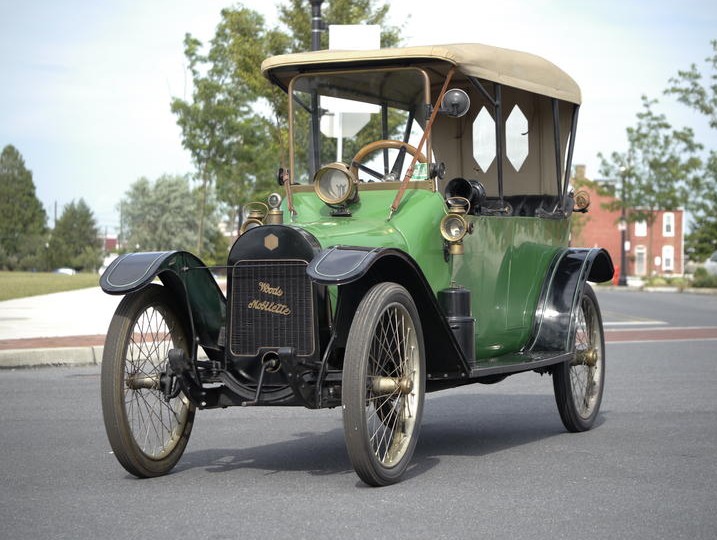1914 Woods Mobilette Tandem Roadster
Offered by Bonhams | Philadelphia, Pennsylvania | October 8, 2012

How cool is this car? It’s a tandem-seat cyclecar. It seats two, the driver in front and the passenger directly behind him or her. This car is long, tall, and skinny and looks like it would tip over if a curve was taken too quickly, but with practically no weight (less than 500 lbs), it would probably stay on the ground just fine.
Francis A. Woods built his first prototype in 1910 but the Woods Mobilette Company of Harvey, Illinois didn’t begin production on this cyclecar until early 1914. Bonhams lists this as a “circa 1913” and 1914 is certainly “circa 1913.” The engine is a 12 horsepower, 1.1-liter L-head four-cylinder. It would do 40 mph and retailed for $380.
Cyclecars were a big thing in the Teens and this is one of the best of the hundreds of different marques produced in the United States. They were affordable and basic, but the Model T managed to undercut them all – and kill off the fad. Production ceased at the end of 1916. This is one of only a few examples of the Woods Mobilette still extant and it’s way cool. It is expected to sell for between $20,000-$30,000. For more info, click here. And for more from Bonhams “Preserving the Automobile” sale, click here.
Update: Sold $48,300.

